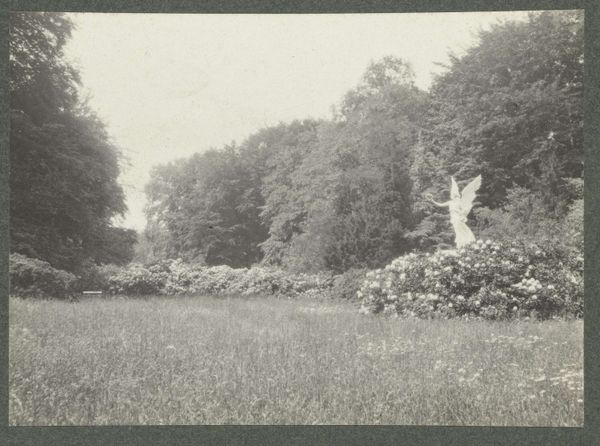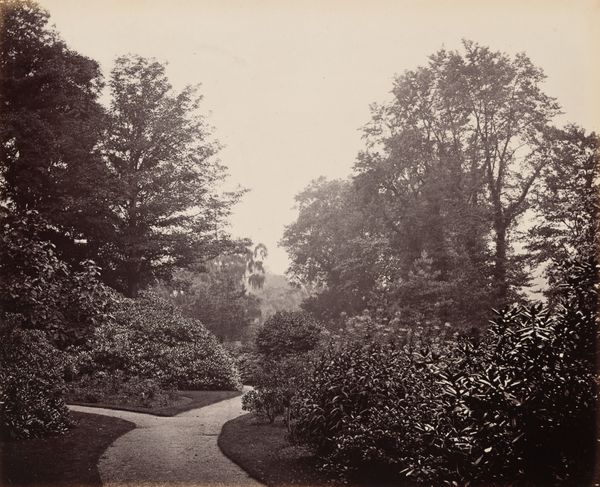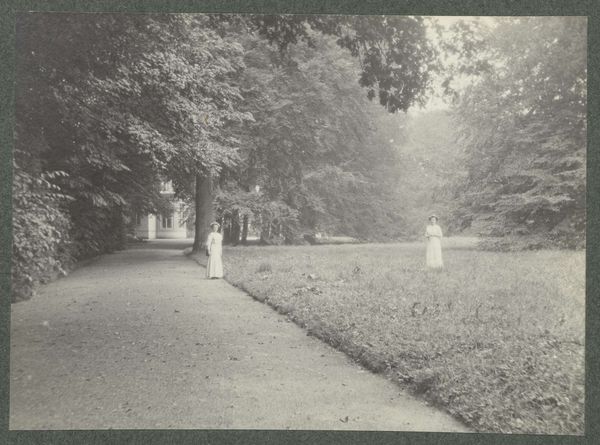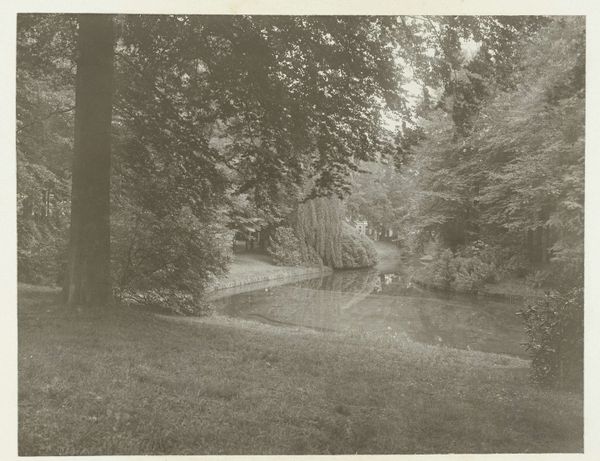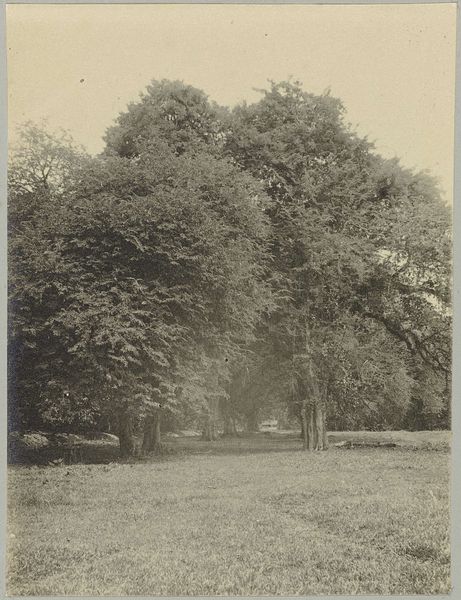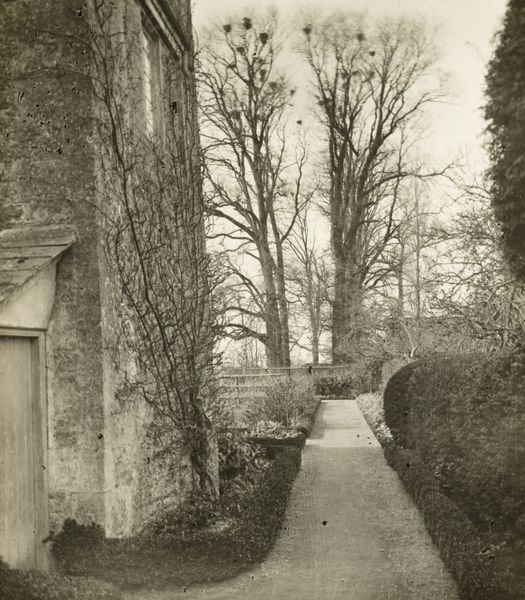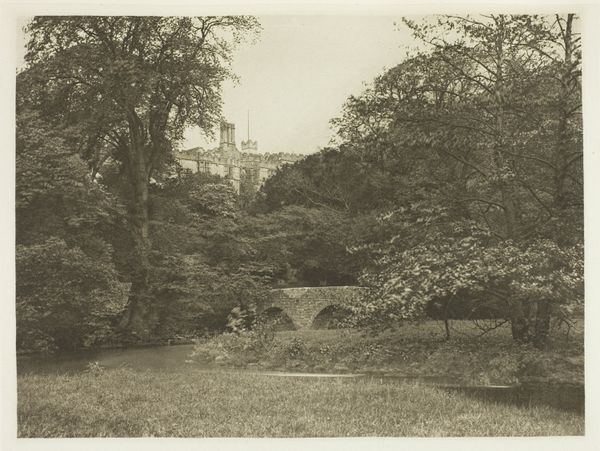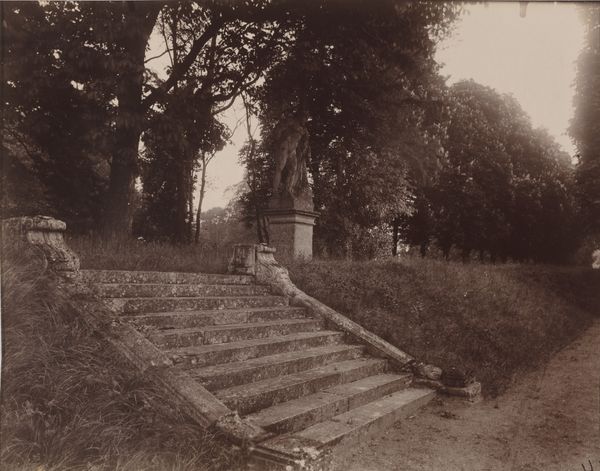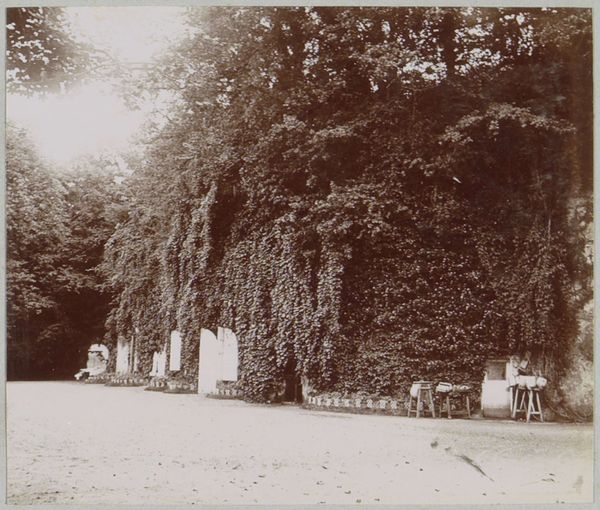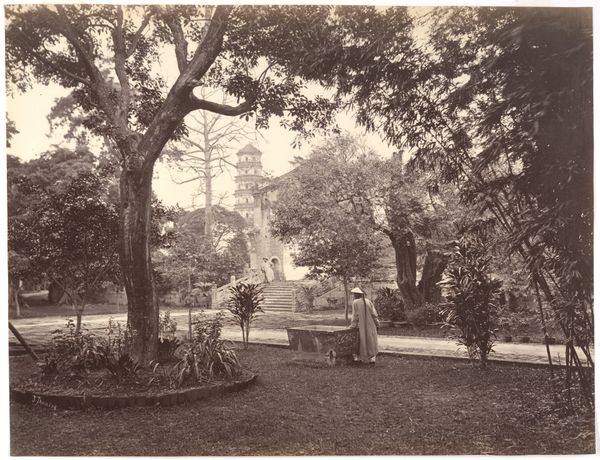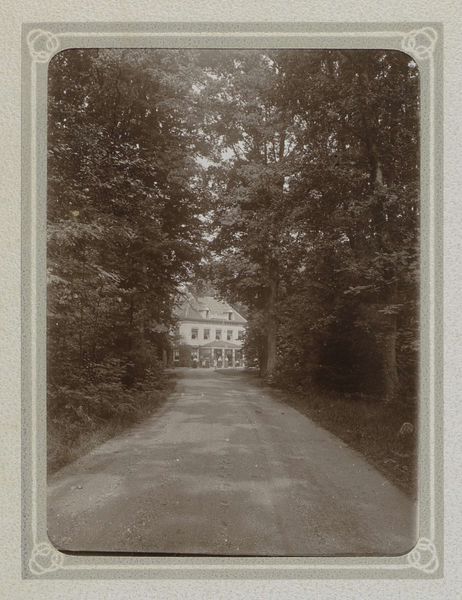
Dimensions: height 172 mm, width 232 mm
Copyright: Rijks Museum: Open Domain
Editor: So, this is a photograph by Richard Tepe, entitled "View in the Garden of Het Loo Palace in Apeldoorn," probably taken between 1900 and 1930. It's currently held at the Rijksmuseum. What strikes me is the almost uncanny stillness captured here... How do you interpret this work? Curator: Well, I find it compelling to consider Tepe's materials and his process in relation to the aristocratic space he's depicting. Photography, at this time, was becoming increasingly accessible, shifting from a highly specialized craft to something more readily available. What does it mean to document a space like the Het Loo palace gardens with a medium becoming democratized? Editor: That's interesting. It does feel almost… subversive to apply photography's accessibility to such an elite space. Almost like labor meets leisure. Curator: Precisely! The carefully manicured gardens themselves represent immense labor, shaping the natural world to conform to ideals of order and beauty. And Tepe, using the tools available to him, captures this tension between manufactured elegance and the material reality of its making. It's not just a picturesque view, but a document of social dynamics. Editor: So, it’s not just *what* is being photographed, but also *how* and *by whom*. It makes me think about the accessibility of art production. Curator: Exactly. Consider the contrast: sculpted busts elevated on plinths versus a humble snapshot. Where do we draw the line between high art and something that's, essentially, a record of place and time dependent on mechanical production? Editor: It's fascinating to think about the image itself as a product, almost a commodity in a way. Curator: Yes. It also reflects how photography's mechanical means transform aristocratic symbols. They become flattened, reproduced, potentially circulated and consumed. This piece encourages viewers to look beyond the visual appeal and consider the labor, materials, and societal shifts at play. Editor: That's a perspective I hadn’t considered before. I was so focused on the aesthetic, but this changes my appreciation for Tepe's work. Curator: It reveals how something as seemingly straightforward as a photograph can carry significant weight, prompting us to think critically about how art is created, disseminated, and ultimately consumed.
Comments
No comments
Be the first to comment and join the conversation on the ultimate creative platform.

